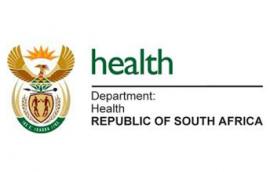
PRETORIA, June 16 (NNN-SANEWS) — South Africa’s Department of Health has advised people on medication for any health condition to adhere to their treatment, as the number of Mpox cases has risen to seven.
The department has noted that all diagnosed patients have chronic illnesses, suggesting a high probability of immunocompromise, unless adherent to prescribed treatment.
“Treatment adherence can prevent new or worsening health problems, and failure to adhere to your prescriptions can negatively impact the quality of your life,” the department said.
The latest confirmed case is a 39-year-old male patient, who was admitted on May 28 at a local private health facility in Cape Town.
On Thursday, he tested positive for Mpox, formerly known as monkeypox, at a private laboratory.
“The patient presented with extensive lesions and he is RVD (retrovirus disease) positive with unknown CD4,” the department said.
The latest patient listed his residential address as Northcliff, Gauteng.
On Thursday, Health Minister Dr Joe Phaahla announced a second death linked to Mpox.
Meanwhile, the department said it was scheduled to receive a batch of Mpox treatment, Tecovirimat, which has been described as effective in preventing morbidity and mortality associated with the disease, especially when initiated within a few days of incubation and diagnosis.
In addition, the department said it was working closely with other stakeholders and will continue with surveillance, contract tracing and health education activities across the country and empower citizens with information to make well-informed health choices.
“The effectiveness of contract tracing and case finding depends on the cooperation and accuracy of information provided by both confirmed and suspected cases.”
Some of the common symptoms of Mpox include a rash, which may last for two to four weeks, fever, headache, muscle aches, back pain, low energy and swollen glands or lymph nodes.
The painful rash looks like blisters or sores and can affect the face, palms of the hands, soles of the feet, groin, genital and/or anal regions. — NNN-SANEWS





